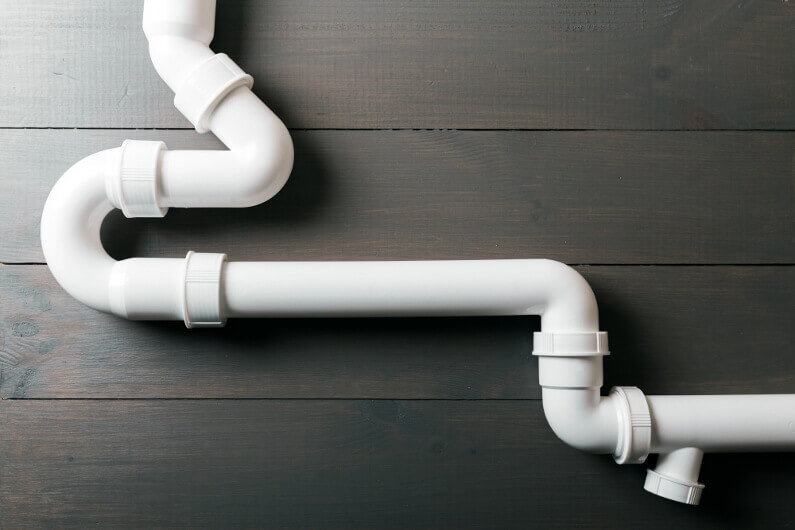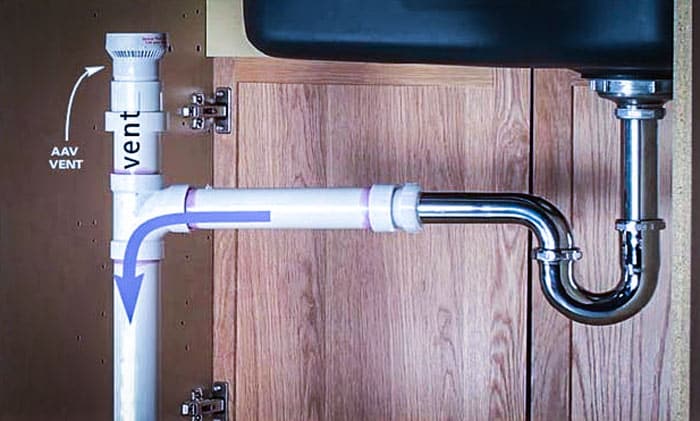Understanding The Importance of Adequate Ventilation in Plumbing Systems
Understanding The Importance of Adequate Ventilation in Plumbing Systems
Blog Article
Just about everyone will have their own theory with regards to The Upsides of Proper Ventilation in Plumbing Design.

Proper air flow in plumbing systems is frequently overlooked, yet it is critical for preserving the capability and security of your home's pipes. Ventilation aids regulate atmospheric pressure, avoid the buildup of hazardous gases, and make certain the reliable elimination of waste. In this guide, we will certainly check out the importance of correct plumbing air flow, just how it works, and the benefits it gives your pipes system.
Comprehending Ventilation in Plumbing
Air flow in pipes describes the network of pipes that permit air to move via the drain system. These vents offer multiple objectives, consisting of managing atmospheric pressure within the pipes, avoiding sewer gases from getting in the home, and helping in the smooth flow of wastewater.
Just How Ventilation Functions in Plumbing Systems
Atmospheric Pressure Guideline
Proper air flow maintains well balanced air pressure within the plumbing system. When water moves through pipelines, it displaces air. Without sufficient air flow, this displacement can produce adverse pressure, bring about slow drains or siphoning of water from catches, which can cause undesirable smells to leak right into the home.
Avoiding Sewer Gas Buildup
One of one of the most essential functions of plumbing vents is to prevent sewage system gases, such as methane and hydrogen sulfide, from collecting within the home. These gases can pose significant health risks and are very flammable. Vent pipes allow these gases to escape securely outdoors.
Aiding in Waste Elimination
Ventilation assists in the efficient elimination of wastewater by preventing airlocks in the water drainage system. When air can stream easily through the vents, it permits water and waste to stream smoothly via the pipelines, minimizing the risk of obstructions and backups.
Types of Pipes Vents
Main Heap Vent
The primary pile air vent, also referred to as the vent stack, is the main vent in a pipes system. It extends from the main drainpipe align via the roof covering, permitting gases to escape and fresh air to enter the system.
Branch Vent
Branch vents link to the major stack vent and offer specific fixtures, such as sinks, toilets, and showers. These vents make sure that each component has adequate ventilation to function appropriately.
Air Admission Shutoff (AAV).
An Air Admission Shutoff (AAV) is a one-way shutoff that permits air to get in the pipes system without the demand for a typical air vent pipeline expanding with the roof covering. AAVs are commonly made use of in renovations or locations where mounting a basic air vent is not practical.
Signs of Poor Ventilation in Plumbing.
Slow Draining Fixtures.
If your sinks, tubs, or bathrooms are draining pipes gradually, it could be an indicator of poor ventilation. Poor air flow can produce a vacuum cleaner result, making it hard for water to drain correctly.
Gurgling Appears.
Gurgling noises coming from drains are typically a result of air being drawn through water traps as a result of negative pressure in the pipelines. This is a clear indication of insufficient ventilation.
Undesirable Smells.
Sewer odors inside your home are a red flag that your pipes system is not effectively aerated. This could mean that drain gases are not being appropriately aired vent outside, leading to possibly hazardous conditions.
Common Air Flow Mistakes.
Inadequate Vent Sizing.
Using small vent pipelines can bring about poor air circulation and pressure imbalances in the system. It's essential to make use of vents that fulfill the specific requirements of your plumbing system.
Improper Vent Placement.
Positioning vents also much from the fixtures they serve can decrease their efficiency. Proper placement makes sure that air can move easily and effectively with the system.
Ignoring Code Demands.
Building regulations provide details guidelines for pipes ventilation. Neglecting these codes can result in a system that fails to operate appropriately and may cause costly repair work or carcinogen.
Benefits of Correct Ventilation.
Improved System Efficiency.
Appropriately aerated pipes systems run much more effectively, with less blockages, faster draining, and much less strain on the pipelines. This performance prolongs the life-span of the plumbing system.
Improved Air High Quality.
By avoiding sewage system gases from entering your home, appropriate ventilation adds to much better interior air top quality, making your living environment healthier and more comfortable.
Avoiding Water Damage.
Appropriate air flow aids prevent water from being siphoned out of traps, which can lead to sewer gases getting in the home and creating water damages gradually.
Actions to Make Sure Appropriate Ventilation.
Consulting Pipes Codes.
Constantly consult regional pipes codes when designing or changing your plumbing system. These codes give the required standards for appropriate airing vent and ensure your system fulfills safety requirements.
Regular Evaluation and Maintenance.
Routine evaluations can aid determine potential air flow issues prior to they end up being major troubles. Upkeep tasks, such as cleaning up air vent pipelines and checking for blockages, are vital for maintaining the system in good working order.
Expert Setup.
For new setups or major modifications, it's smart to work with an expert plumber. They have the proficiency to make certain the air flow system is properly created and set up according to code.
Verdict.
Correct ventilation is an essential part of any plumbing system, making certain that it operates efficiently and safely. By recognizing the significance of air flow, acknowledging the signs of poor air flow, and taking steps to keep your system, you can prevent expensive concerns and shield your home's air high quality.
What is a Plumbing Vent and it's used for?All plumbing systems in residential and commercials construction have a plumbing vent. It doesn’t just vent unwanted odors from the drainage system to the outside; it actually serves an important purpose by supplying air to the system.
The plumbing drainage system is actually called a drainage, waste and vent (DWV) system. When water flows down the piping, an air supply (vent) is needed to allow the water to flow. Think of the vertical pipe as a drinking straw. If you plug the top end of a straw, liquid won’t drain from it.
The DWV system in your building consists of a series of pipes connected to each fixture; they extend above each fixture, and the system terminates at an open pipe that extends through the roof. This piping allows air into the system and prevents unbalanced pressures in the piping.
?The vent also prevents the system from drawing water out of a trap at the fixture with the characteristic “glug-glug-glug” as the drain gasps for air. Plumbing traps should drain smoothly and never “glug” or gasp for air.
If you have a drain that empties slowly or gurgles as it drains, this may indicate a venting problem. If you flush a toilet and the sink gurgles, there’s definitely a vent problem. It is good idea to have a Plumber check this.
https://www.ameliashomeinspection.com/blog/what-is-a-plumbing-vent-and-its-used-for

Hopefully you enjoyed reading our excerpt about Essential Plumbing Vent Pipes: Understanding Their Role. Thanks a ton for taking the time to read through our posting. Liked our piece of writing? Please quickly share it. Help other people find it. I enjoy your readership.
Contact Report this page